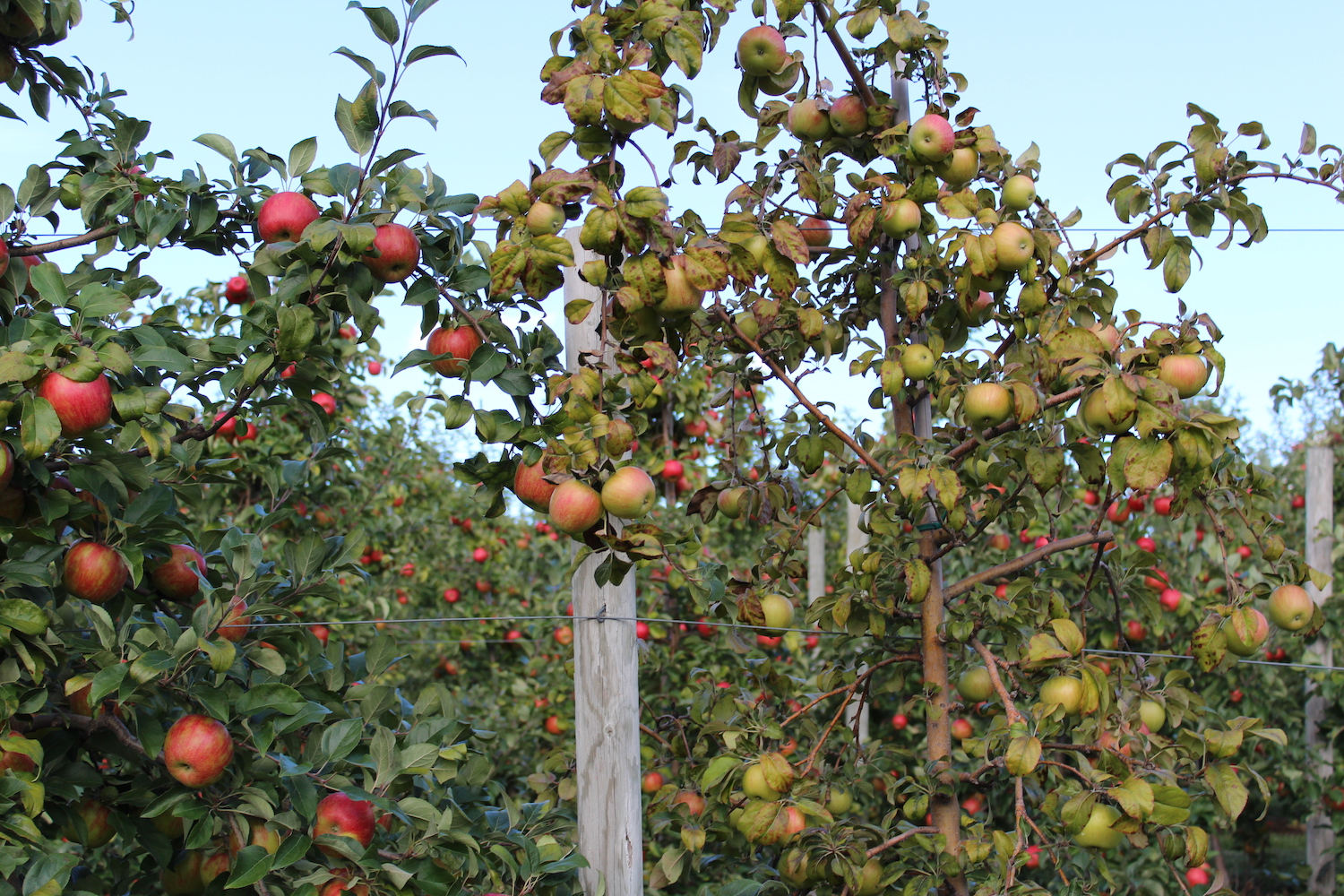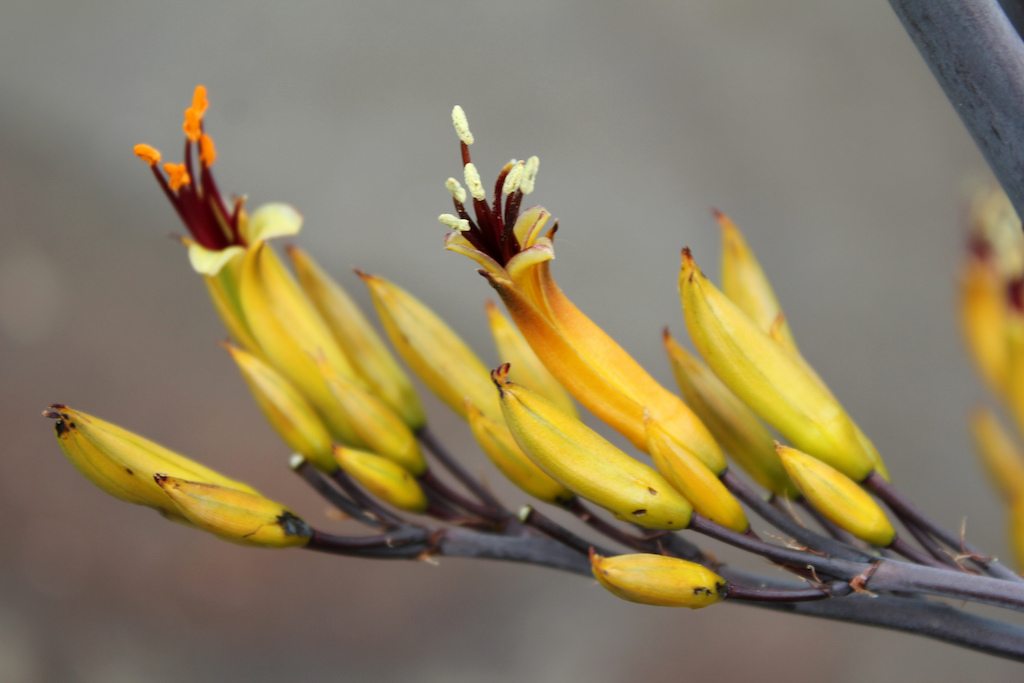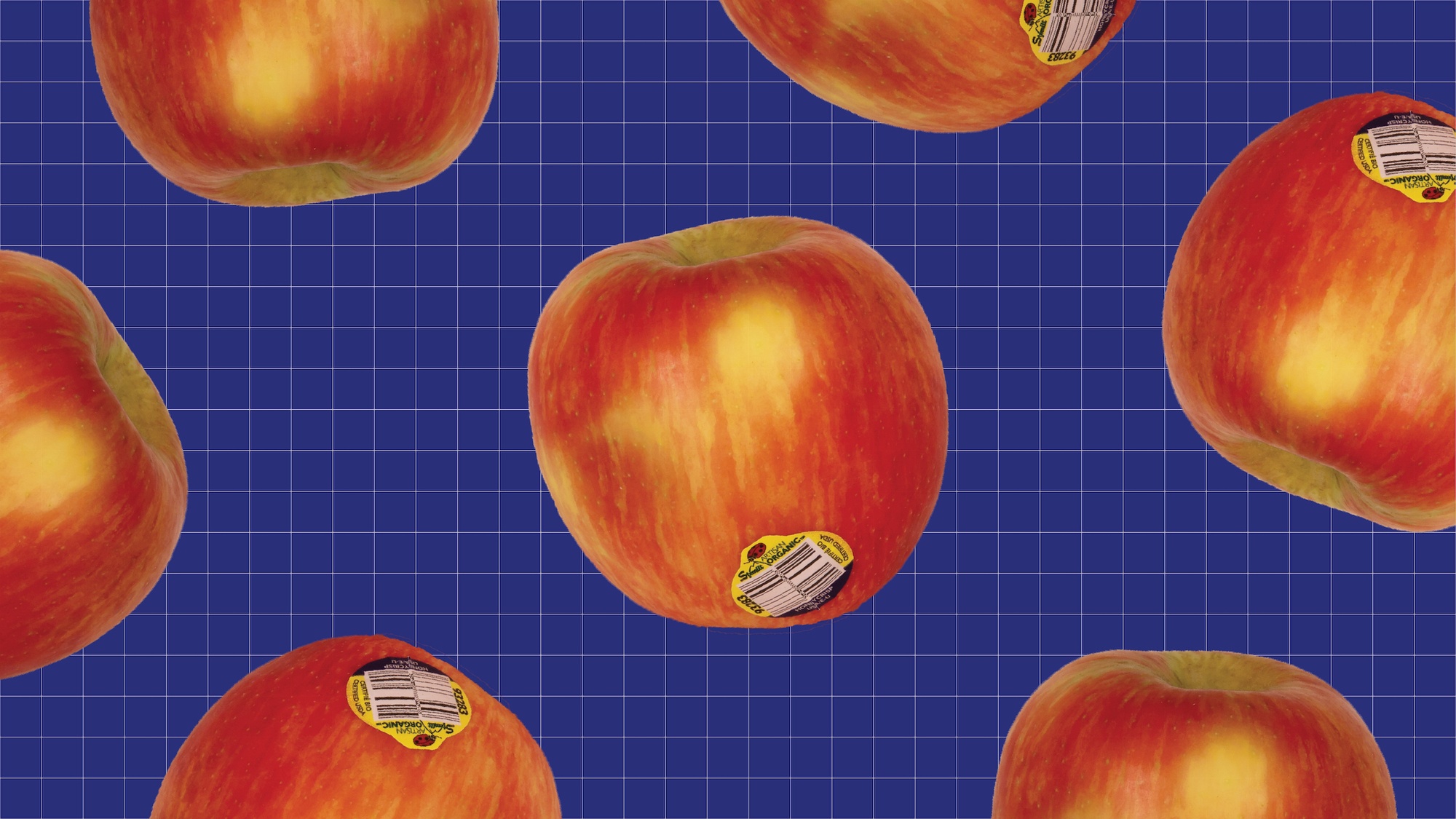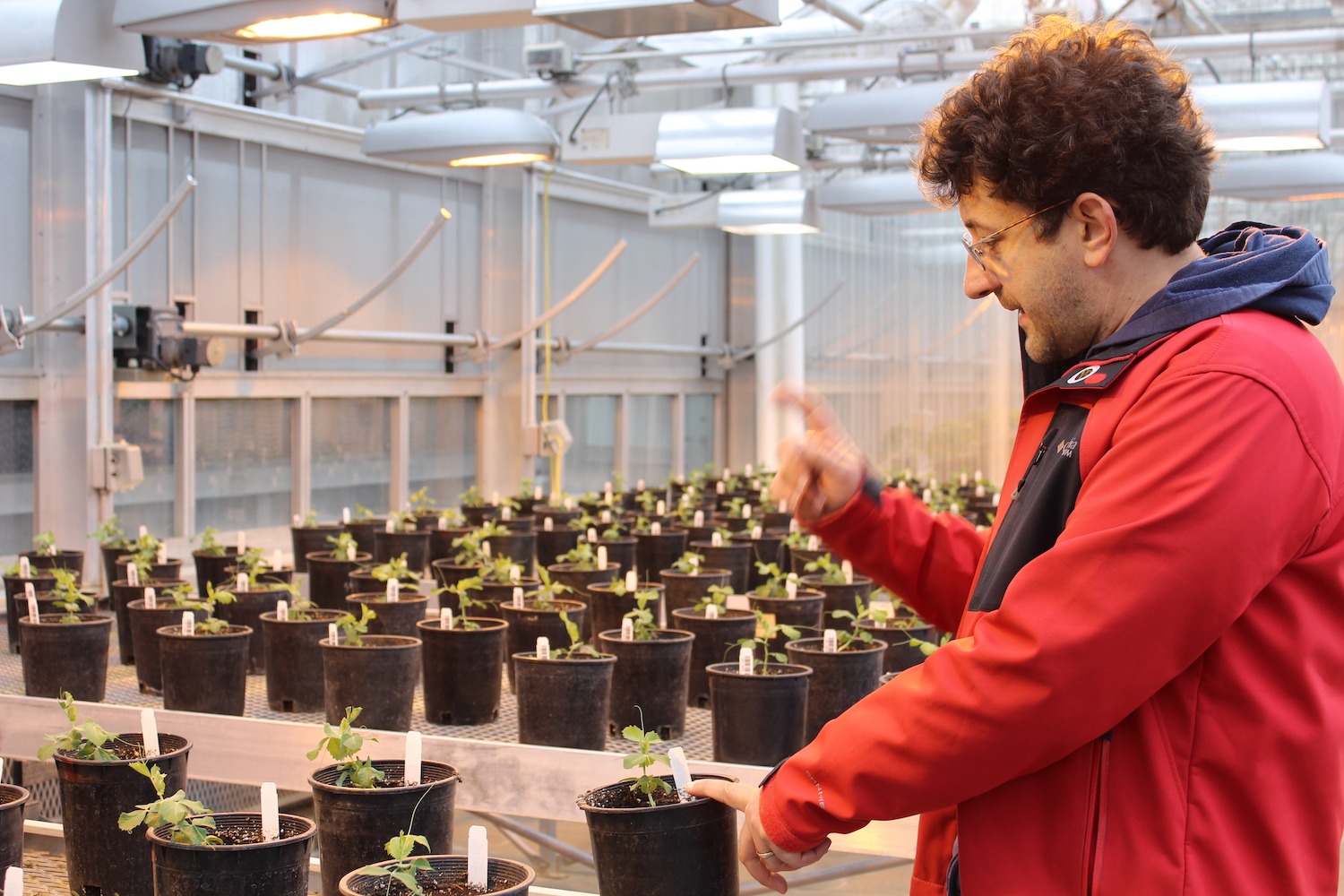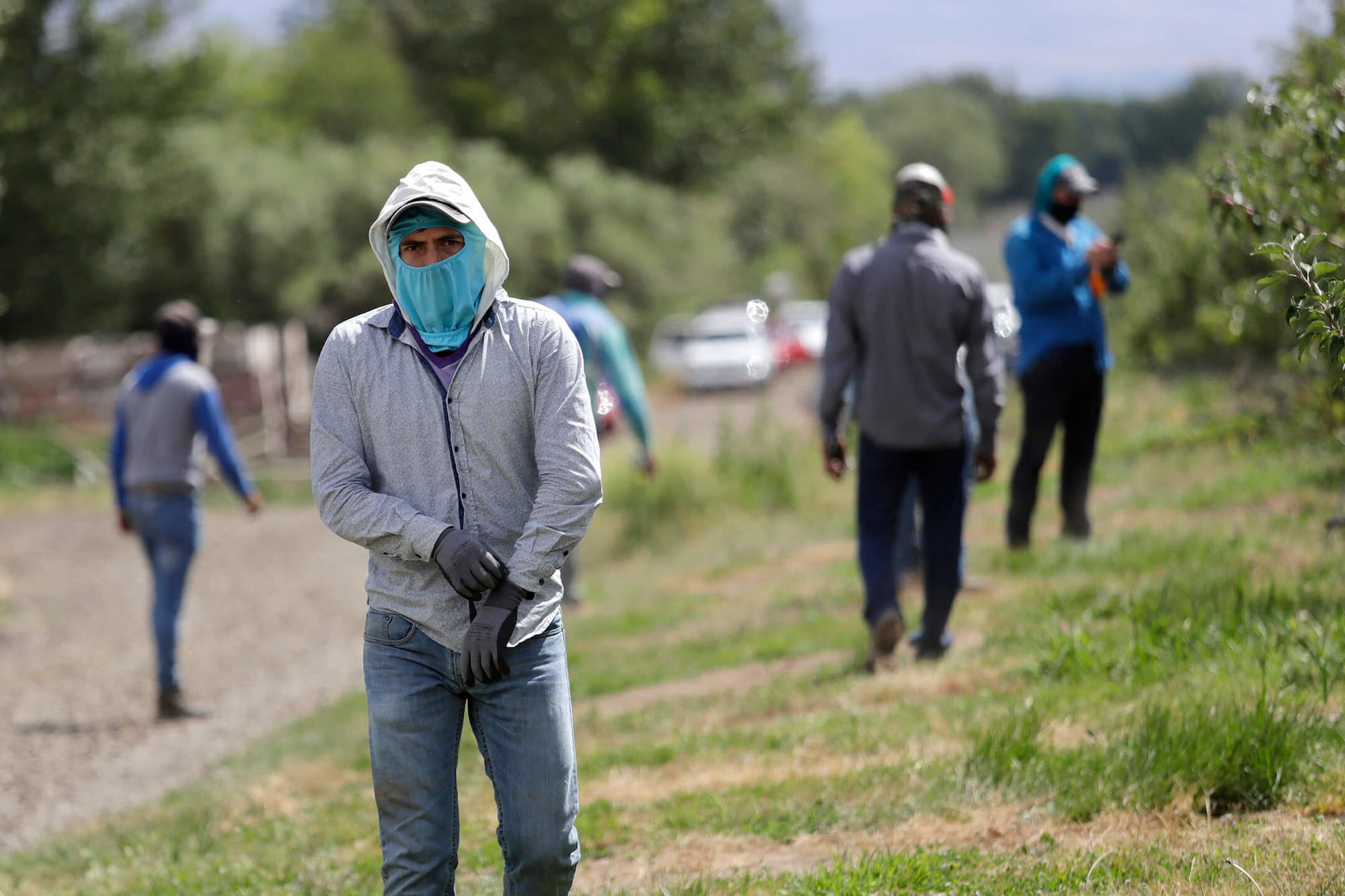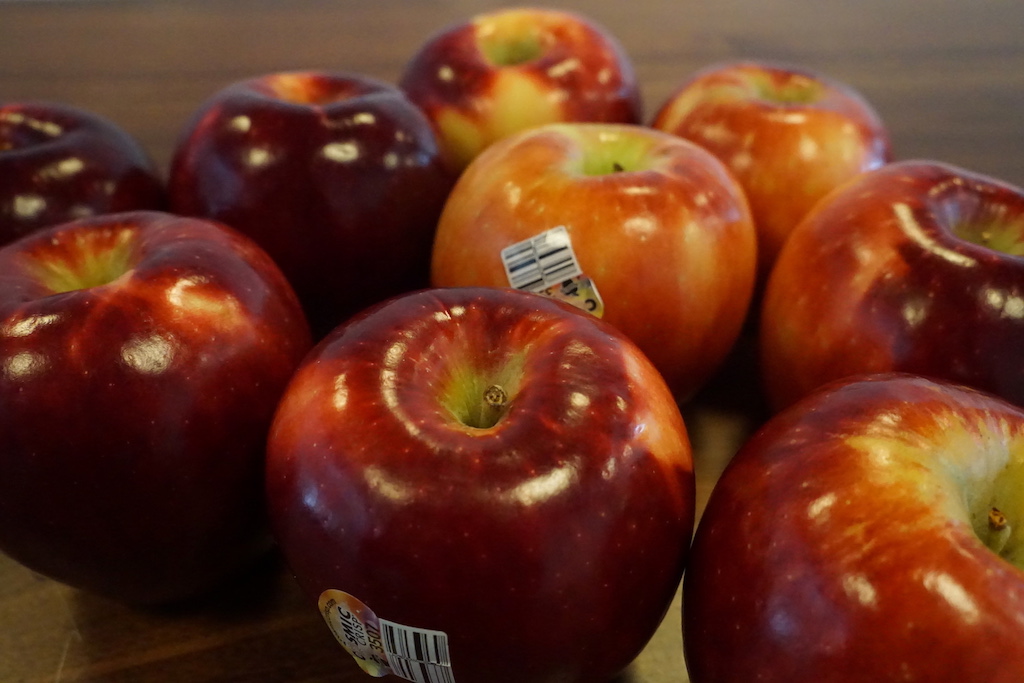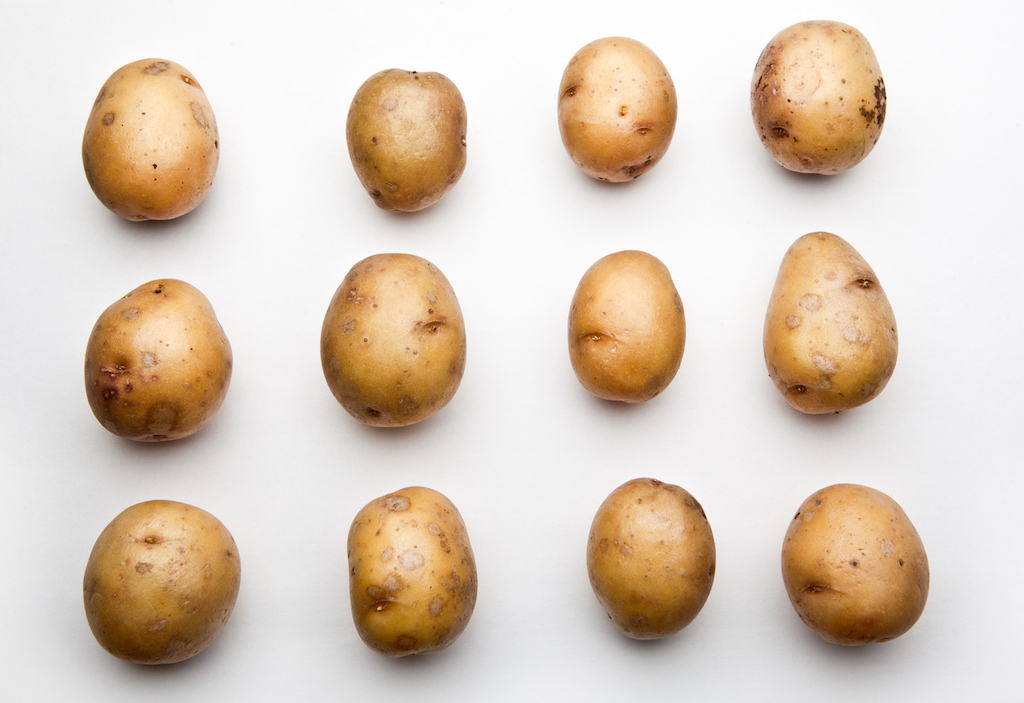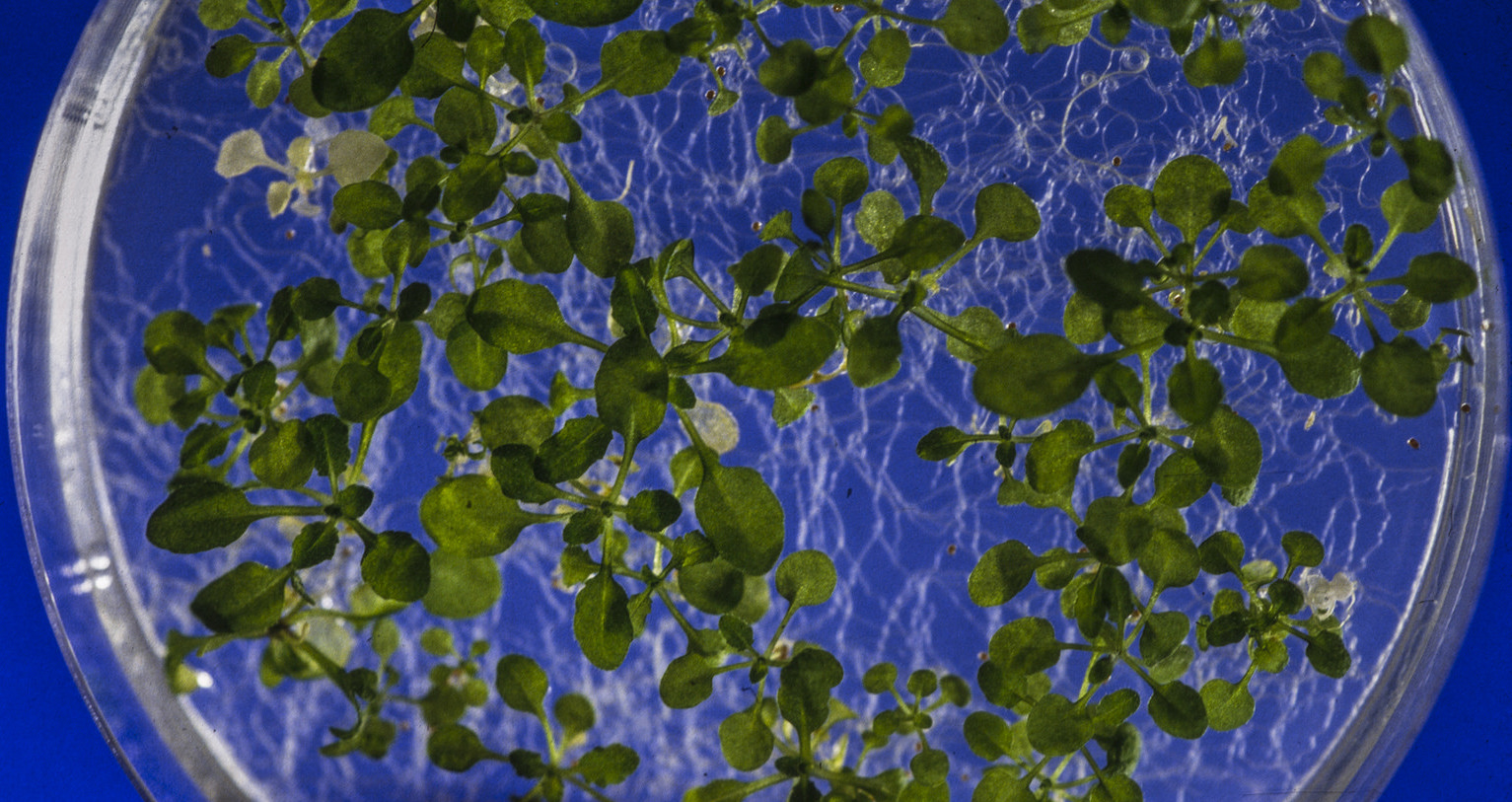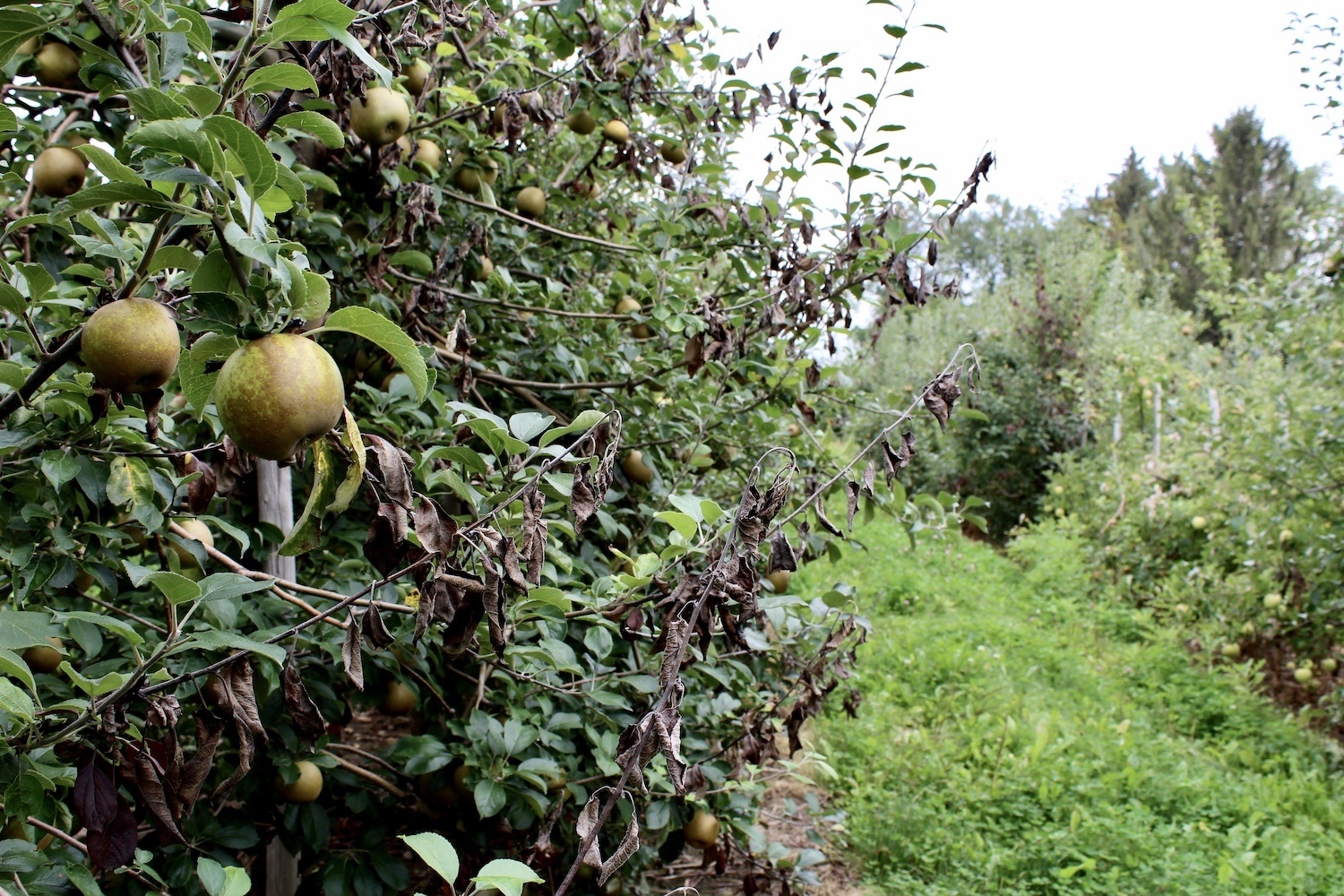
Awais Khan
With new rapid cycle breeding techniques, apple scientists are making use of wild genetic diversity faster than ever.
Any apple grower would be horrified by Awais Khan’s disease-ridden orchard. Never tended or sprayed, many of the trees in his small plot in Geneva, New York, are scarred with apple scab and cedar rust. Others hang with white webs of powdery mildew.
Pictured above: Apple trees infected with fire blight in Awais Khan’s orchard.
Fire blight, the bacterial nemesis of apple growers everywhere, hasn’t appeared yet this season. But on this muggy May afternoon, it could strike at any moment. Khan, a geneticist who studies apples and their diseases at Cornell University, nodded solemnly, fingering a scabby leaf at the end of a row: “This is perfect weather for fire blight.”
Yet the trees in this sickly orchard are not all equally vulnerable to these apple maladies, which ruin tens of millions of dollars of produce each year. The thousand or so trees here were selected to represent the broadest possible swath of apple genetic diversity, sourced from the Department of Agriculture’s (USDA) larger collection up the road; some of them are proving better able to resist certain diseases, fire blight included.
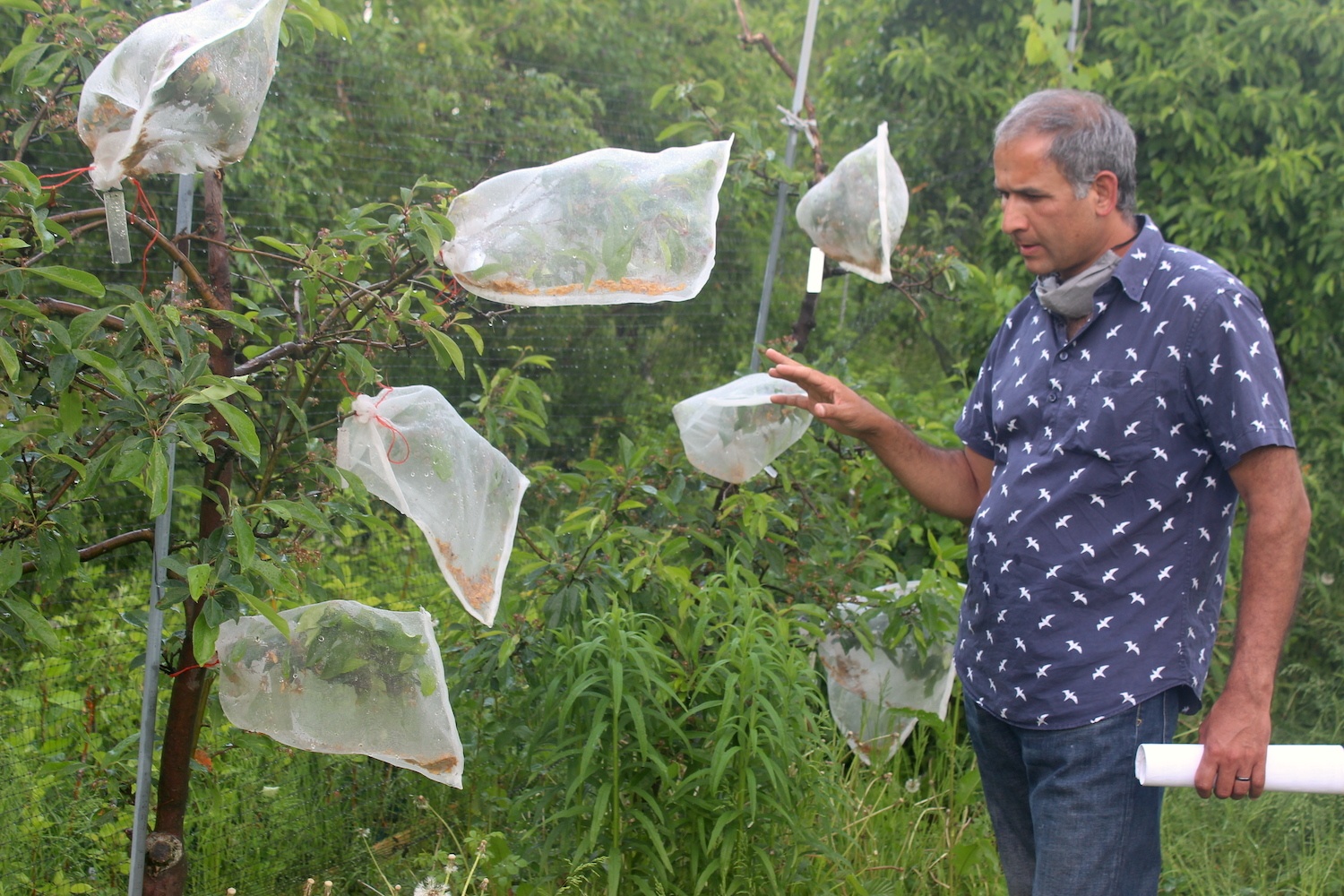
Awais Khan points out a tree recently pollinated with the early-flowering T1190 apple line in his experimental orchard in Geneva, New York. Nets around the flowers prevent insects from spreading the transgenic pollen outside the orchard.
James Dinneen
Khan’s research focuses on identifying the genes responsible for that resistance, many of which occur only in the wild relatives of domesticated apples, then breeding them into varieties that growers want to cultivate and consumers want to eat.
“You see that some have natural resistance and some are highly susceptible,” said Khan, pointing out a pair of trees, one covered in powdery mildew, the other, a fragrant Russian variety called Antonovka, in perfect health. “We are trying to put those different genes together.”
Over the previous few weeks, Khan and his team of graduate students made the first crosses in a five-year project to breed apples that are resistant to fire blight, a super-fast timeline for slow-growing apple trees enabled by a genetics-driven approach called rapid cycle breeding.
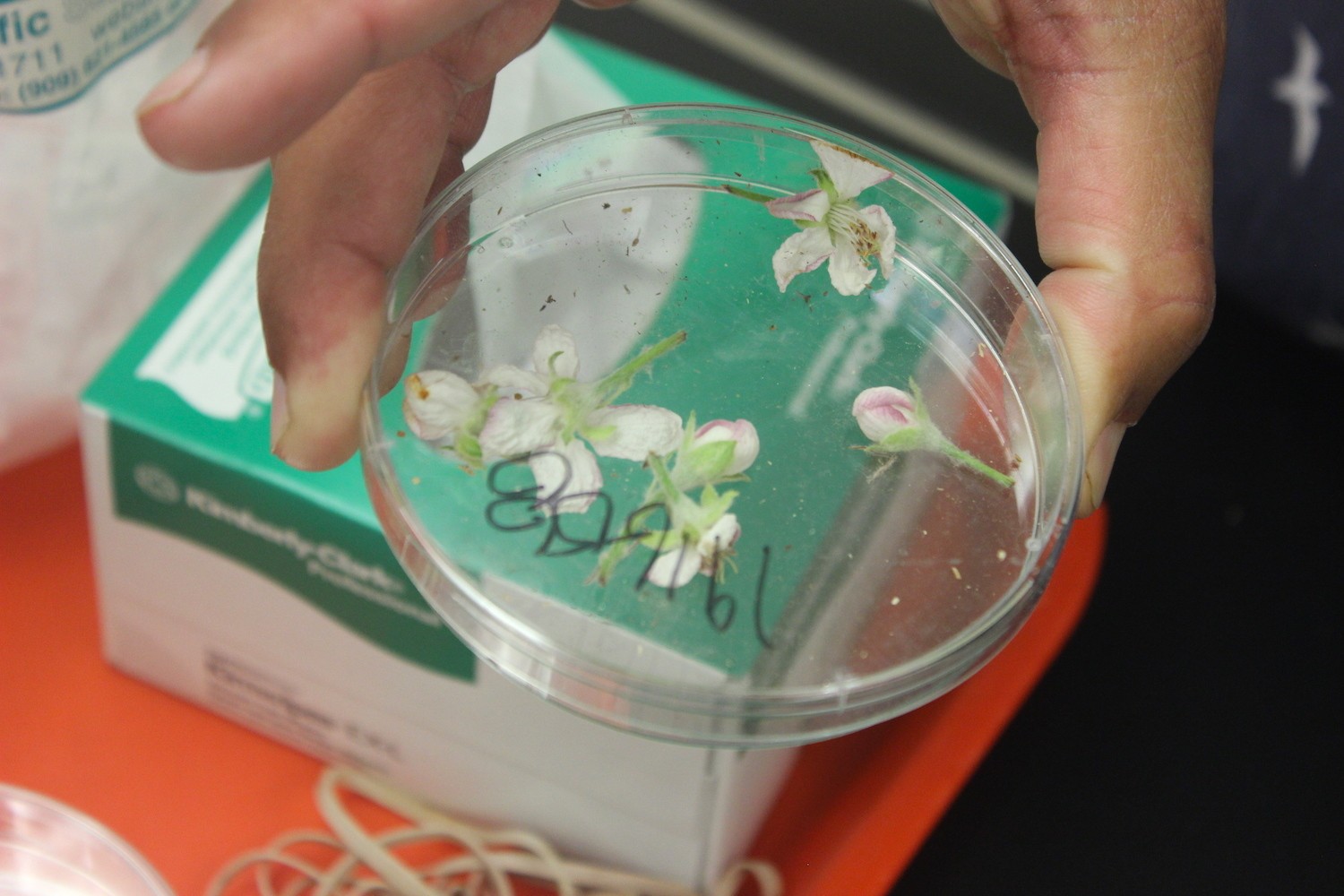
Khan’s team collects pollen from an apple flower to use in future crosses.
Awais Khan
Using plastic paint brushes loaded with pollen, the team flitted among the orchard like bees, fertilizing thousands of the white, pink, and lavender flowers, and cataloging each novel cross, one of which could eventually give rise to a more robust Red Delicious or Honeycrisp. Part of a USDA-funded initiative to improve fire blight management in five major apple-producing states, the project is also part of a trend among plant breeders to use the wild relatives of domesticated crops to improve the varieties we eat, an old idea made more feasible by new genetic tools and techniques.
“It’s very inspiring looking at these apples,” said Khan, standing among the orchard’s more than 200 different accessions of the apple genus Malus, each grown from seeds collected from all over the world by generations of apple breeders. “But I think it’s sometimes frustrating that we cannot make use of this diversity. It’s there, it’s beautiful, it’s nice. But how to make use of it?”
—
Caused by the bacteria Erwinia amylovora, fire blight infects trees via new buds or nicks on leaves and branches, which then develop oozing cankers and turn a necrotic red-brown as though burned. If left untended, the bacteria grows just beneath the bark toward the core of the tree, killing it. Even if a tree survives infection, it must be cut and removed before an insect or wind can spread the bacteria to neighboring trees. In a bad outbreak—for instance, in Michigan in 2000—fire blight can kill hundreds of thousands of trees in a region, decimating entire orchards. And the threat of fire blight could be getting worse, with climate change shifting the hot, humid weather in which the bacteria thrive earlier in the season when blooming trees are most susceptible. “If you ask an apple grower what they’re scared of, they are more scared of fire blight than anything else,” said Khan.
Growers have methods to control fire blight like spraying antibiotics or pruning infected branches, but they are frequently ineffective and come with economic and environmental costs, said George Sundin, who researches fire blight at Michigan State University and is leading the USDA fire blight management initiative. The lack of effective controls is compounded by the fact that nearly all of the most popular apple varieties are descended from a small family of cultivars susceptible to the disease. Sundin explained this is likely because fire blight, first reported in a pear orchard in upstate New York in 1780, probably originated in North America. Thus, the apple trees brought by European colonists never had a chance to evolve resistance to the disease, which has since become a risk for their genetically similar descendants in orchards all over the world. “It’s really like an invasive disease situation in reverse,” he said.
However, some wild apple varieties, distant cousins of the ones we eat, have genes that make them resistant or less susceptible to fire blight. By testing different species and varieties for resistance, then comparing the genetic code of resistant trees, apple scientists have identified at least 40 different areas of the Malus genome associated with resistance to fire blight—most of these occur in wild varieties. Khan’s breeding project aims to combine several of these wild genes in an apple line that can resist fire blight without the need for chemicals or other management strategies.
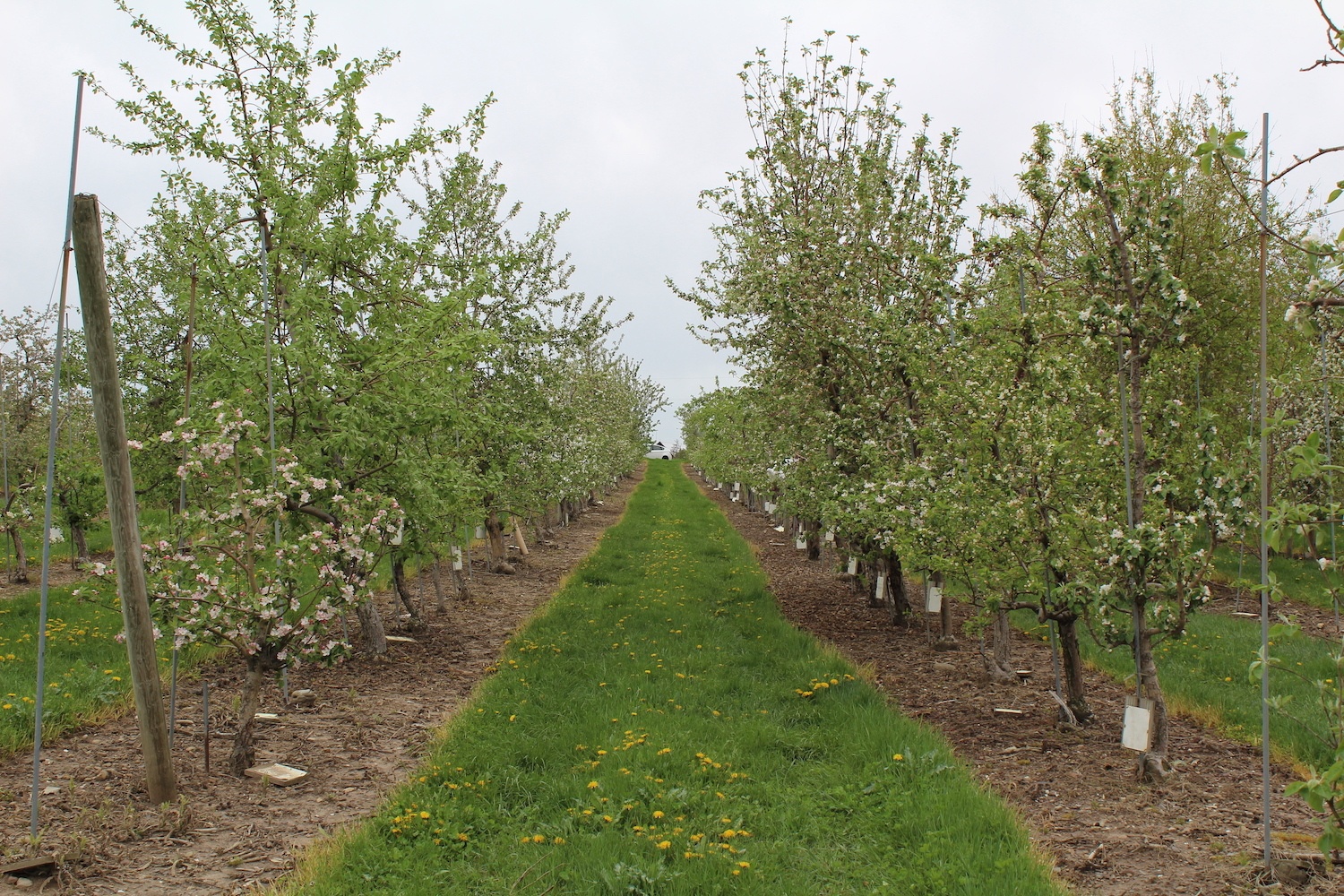
Rows of diverse wild and domesticated apple varieties flower in Khan’s experimental orchard in Geneva, New York. More than 200 varieties in the apple genus Malus from all over the world are represented in the orchard.
Awais Khan
“A plant which cannot be affected by fire blight would be really nice,” said Henryk Flachowsky, a fruit geneticist who studies fire blight at the Julius Kühn-Institut in Dresden, Germany (he’s not involved in Khan’s breeding project). “We would have banned one of the biggest problems in fruit growing.”
The thing is, apple trees are trees. They take a long time to grow, on average four or five years before first flowering. And until they flower and produce pollen, they can’t be used to fertilize the next generation. This bottleneck is compounded in breeding experiments with wild plants. When a domesticated apple variety like Gala is crossed with a wild variety to capture its resistant genes, desirable traits like sweetness or fruit size are also affected. Offspring from that first cross may have resistance, but they’ll also have a lot of unwanted genetic material that could make any fruit they produce small and bitter and otherwise unsalable (ever try biting into a crabapple?). Breeding out that unwanted material requires making more crosses, returning over the course of several generations to a tree that has a chance of producing tasty fruit—all while retaining the resistance genes.
In a regular apple breeding project, making the four or five crosses necessary to breed in resistance from a wild variety and breed out unwanted material can take 20 years or longer. Then it might be another 20 years before the resistant line can parent a commercial variety accepted by growers and grocers.
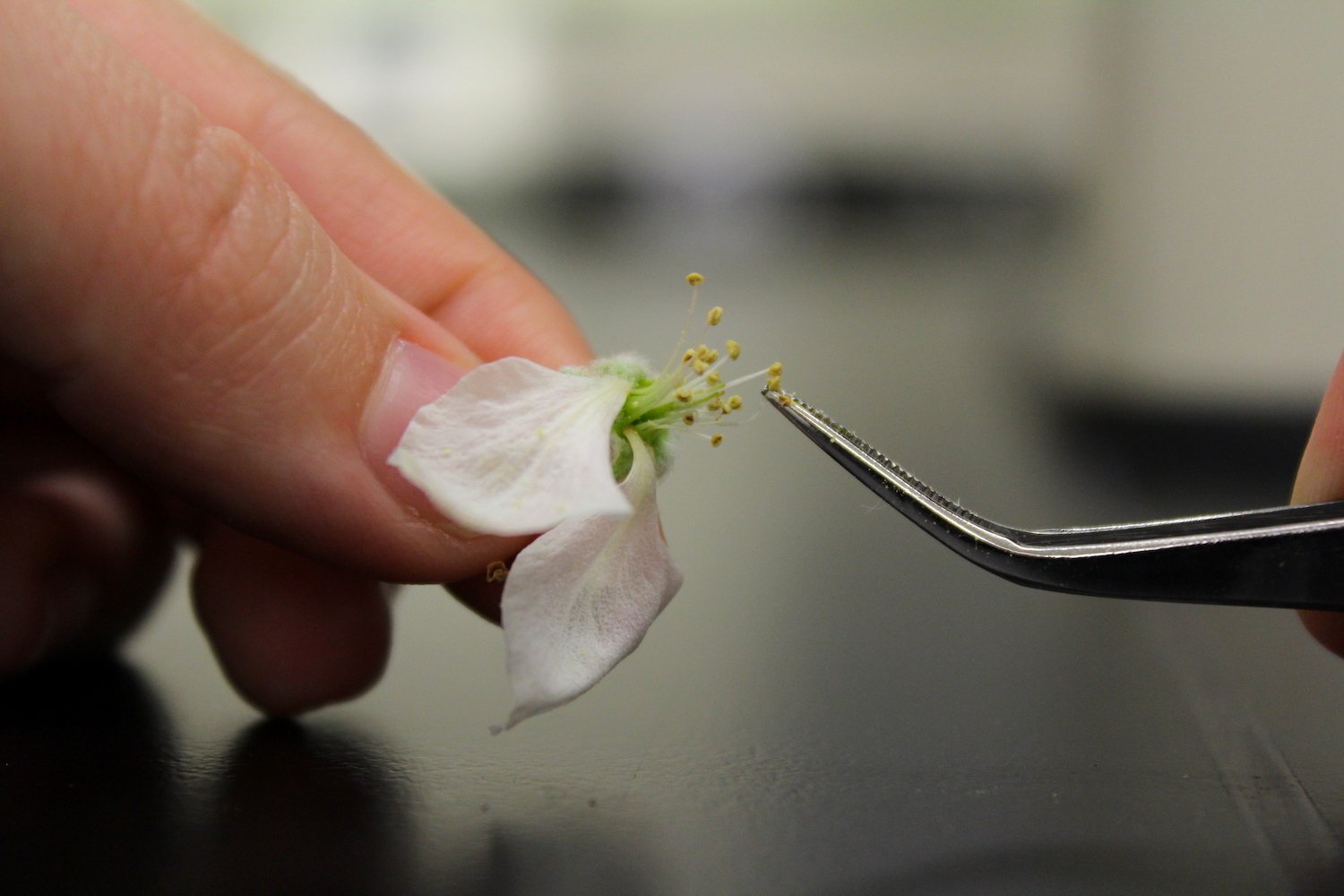
A member of Khan’s team collects pollen from an apple flower at the the Cornell AgriTech lab in Geneva, New York.
Awais Khan
“A few more crosses in apple means a long time,” said Khan. For instance, a project started in the 1940s to breed apples with an apple scab-resistant gene from the Japanese crabapple Malus floribunda didn’t result in any commercial cultivars until the 1970s. Still, Khan points out the long-term investment eventually paid off. Today, more than 70 apple scab-resistant cultivars are on the market, some grown widely in Europe where chemical methods of controlling disease are strictly regulated.
But 40 years is a long time to wait for an apple. To speed up the breeding process, Khan’s team is using a genetically engineered apple line recently developed by Flachowsky’s lab in Germany called T1190.
The modified trees have a gene derived from the silver birch tree, which causes them to flower in less than a year. By using the early-flowering T1190 trees, Khan’s breeding project will take four or five years instead of two decades. This rapid-cycle breeding method has increasingly been used in breeding projects with many different crops, with the greatest impact on slow-growing tree crops like citrus and nuts.
—
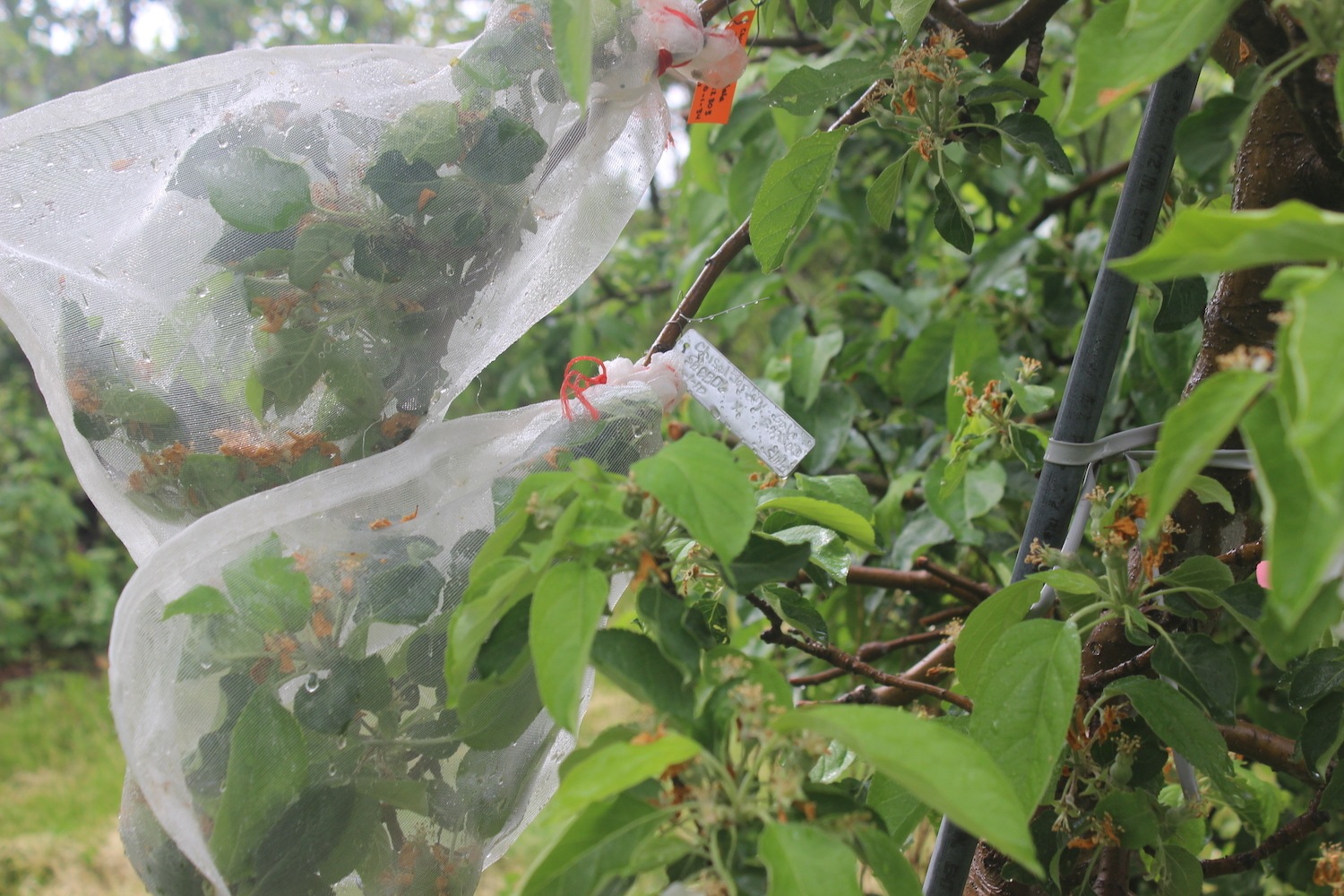
An apple tree recently pollinated with the early-flowering T1190 apple line in Awais Khan’s experimental orchard in Geneva, New York. Nets around the flowers prevent insects from spreading the transgenic pollen outside the orchard.
James Dinneen
Out in Khan’s orchard, the thousands of flowers just fertilized with T1190 pollen are wrapped in nets to prevent any unwitting bugs from messing up the crosses or spreading transgenic pollen beyond the orchard. When those flowers develop fruit in a few months, Khan’s team will take the seeds, sprout them in a fridge, then grow them in a greenhouse. When the seedlings develop leaves, Khan will take clippings and sequence sections of their DNA to check which plants received the desired genes from the cross. Called marker-assisted selection, this process has, like the early-flowering silver birch gene, sped up the breeding process for many different crops in recent years by enabling breeders to guarantee traits are passed on through each generation.
When the selected seedlings flower (which should happen by summer 2022), Khan will repeat the process, using each cross to breed in another desired gene from another resistant variety. This should culminate in an apple line with five resistance genes, two for fire blight and three for apple scab. Khan expects stacking or “pyramiding” multiple resistance genes will make the resulting apple’s defenses even more robust and durable. “One gene can be overcome,” said Khan. “I’m really excited to see all of them together.”
In theory, growers will be able to use the new apple line, stored as pollen in the fridge in the basement at Cornell AgriTech in Geneva, to cross with their favorite varieties and confer resistance to disease. According to Khan, another advantage of this approach is that growers, after making that initial cross, can select offspring that lack the early-flowering gene descended from the T1190 line. These trees would not be regulated as genetically modified organisms in the United States since they no longer contain any transgenic DNA.
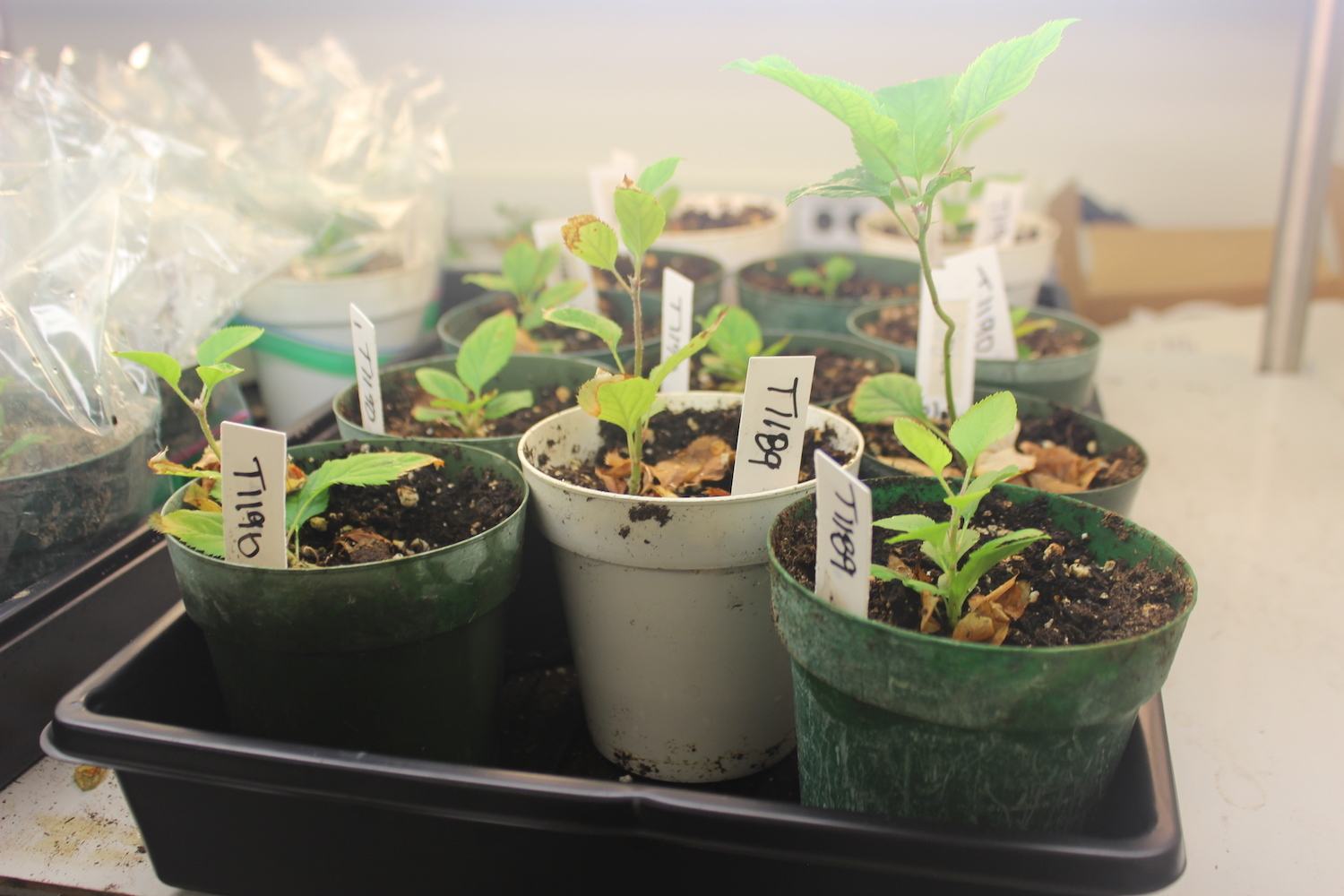
T1190 seedlings growing in Khan’s lab at Cornell AgriTech.
James Dinneen
But rapid cycle breeding aside, don’t expect one of these fire blight-resistant apples to show up in a grocery store near you any time soon. Because of all the uncertainty involved—whether from regulation or the caprice of how crosses impact fruit quality—Khan is wary about making any estimate of when this work could lead to an apple that’s both disease-resistant and great to eat. And even a great apple must gain acceptance from growers and buyers. “Breeding is not as challenging as adoption of a new variety,” said Khan. “If it is something new, we don’t trust it.”
Flachowsky estimates it could take Khan 15 to 20 years from this first cross to achieve a commercially viable apple, though he points out it would be far longer without the rapid cycle breeding approach. He added that getting the benefits of that genetic diversity as fast as possible is especially important “in view of global climate change. We can expect we will get problems in food production, and we urgently need diversity to solve these problems.”
Khan, back in his Geneva office, agreed: “I think bringing crop wild relatives and diversity can make our production system more sustainable and durable,” though he had no illusions about how long that might take, even within his small world of apple diseases. He laughed, digging up some old papers on breeding for resistance to fire blight. The oldest was a weathered dissertation written by Cornell’s first natural sciences PhD in 1886.
“And still we are working on it.”

